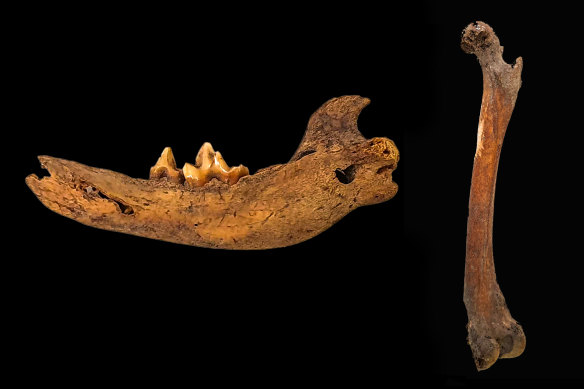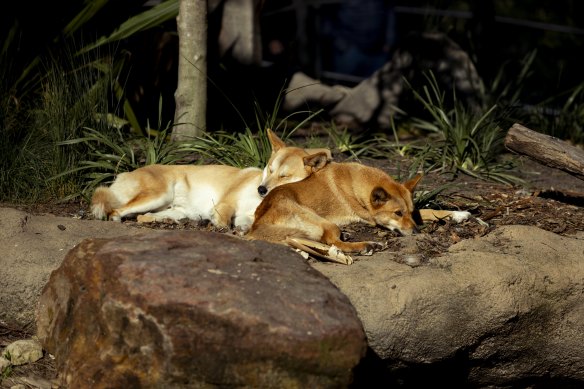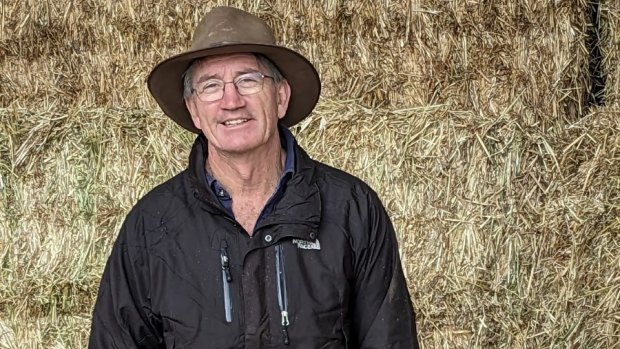Bone found at Balmoral Beach reveals origins of Australia’s apex predator
When scientist Sally Wasef sent off a dingo bone found on Balmoral Beach for carbon testing, she thought it would be a couple of hundred years old at most.
But the results astounded the Queensland University of Technology paleogeneticist. The bone found in a rock shelter at the exclusive Sydney enclave in the early 1990s was actually 2746 years old.
That ancient piece of Sydney dingo is now being used to argue for greater protection of the species after Wasef found the DNA in the Balmoral bone is similar to the DNA of modern dingoes.

The tooth found at the Royal National Park, left, and the bone found at Balmoral Beach, right.
She said that has proved the animals have not widely interbred with domestic dogs since they walked the shores of Sydney Harbour thousands of years ago, as once thought, and remain unique.
“There is a misconception that if dingoes and dogs are in the same place they will interbreed,” Wasef said.
“But we couldn’t find any evidence of that because modern dingoes are retaining the same ancestral marks.”

Mosman’s modern-day dingoes: Kep Kep and Warada chill out at Taronga Zoo on Tuesday.Credit: Dominic Lorrimer
Wasef and co-author Yassine Souilmi, from the University of Adelaide, studied 42 ancient specimens. The Balmoral bone was the oldest. The second-oldest was a tooth found in a rock shelter at Curracurrang in the Royal National Park in the 1960s, which dated back 2400 years.
Their research identified that the two distinct dingo populations still found on either side of the Great Dividing Range were established thousands of years ago.
“Most of the modern dingoes that we tested, we didn’t see any sign of interbreeding,” Wasef said. “We’re hoping that people are going to stop killing the dingoes after seeing this study.”
Dingoes are deemed “wild dogs” in NSW – a pest species that landowners have to manage by law, largely by killing them. They are retained in national parks as a native apex predator, other than in areas where they pose a high risk to people or nearby livestock.

Craig Mitchell runs 8500 sheep near Cooma and has suffered wild dog attacks.
Some advocates for controlling wild dogs argue few unique dingoes remain and the species is largely hybrid, and does not warrant protection.
Wild dogs preying on cattle and sheep cause $73 million a year in agricultural losses, according to federal government research.
NSW Farmers is pushing for more sustained efforts to control the wild dog populations, including more dog-proof fencing of public land. Some members are also concerned wild dogs from Victoria will “invade” NSW thanks to a legal change in Victoria this year that will protect dingoes near the state border.
But Craig Mitchell, a NSW Farmer member who runs 8500 merino sheep near Cooma, said it was important to get the balance right between retaining dingoes where they caused no harm, and protecting livestock.
“I don’t really care where they run in the [adjoining national] park, as long as they don’t eat my sheep,” he said.
“There’s no way I want to get rid of them all, but I do want to run my business and I’ve got to look after my livestock – they’re under my care.”
The Examine newsletter explains and analyses science with a rigorous focus on the evidence. Sign up to get it each week.